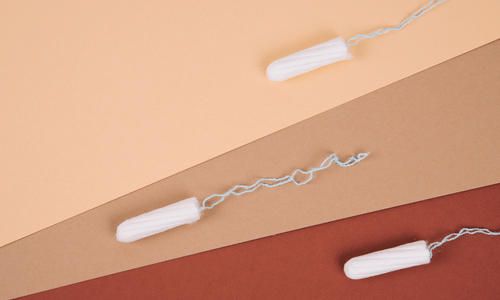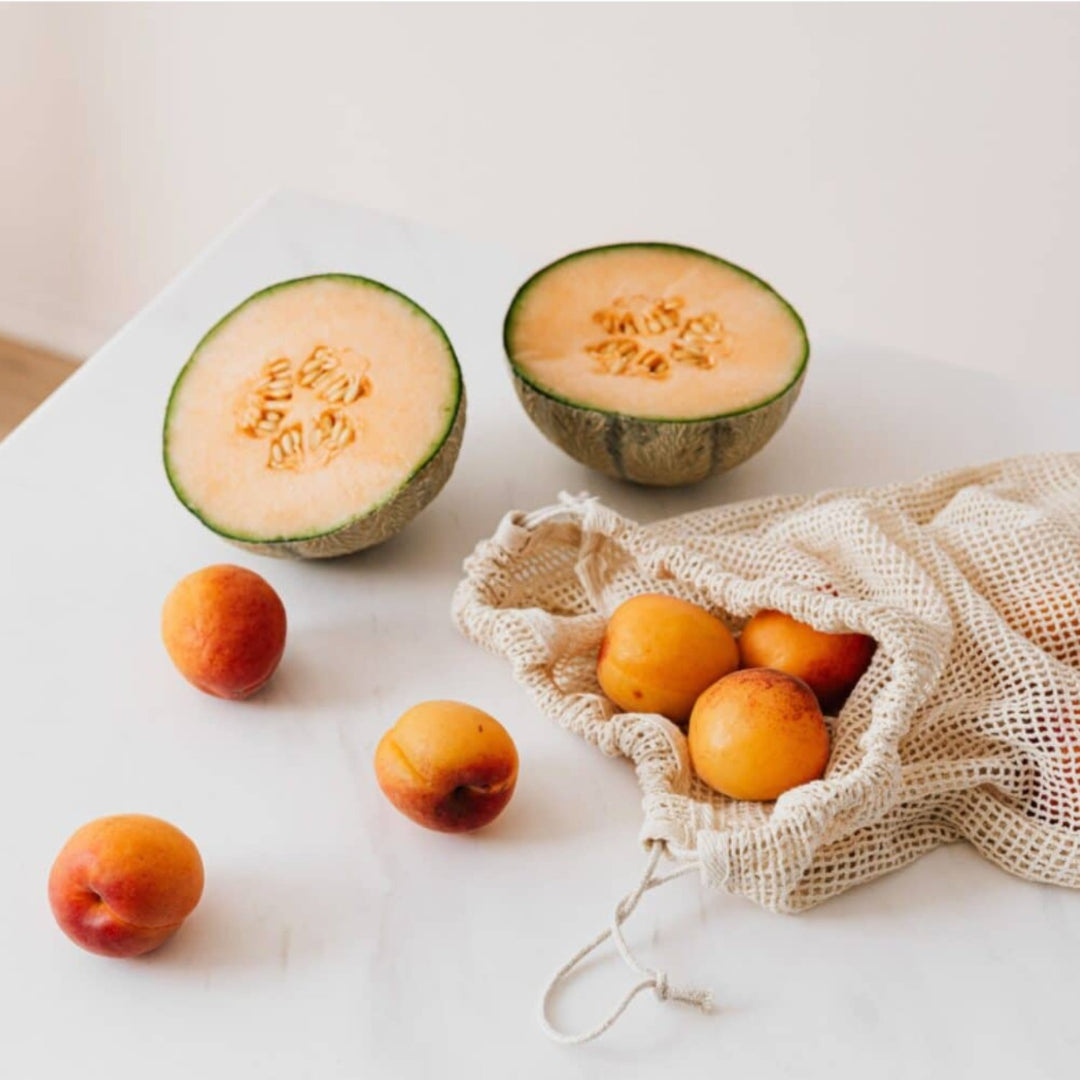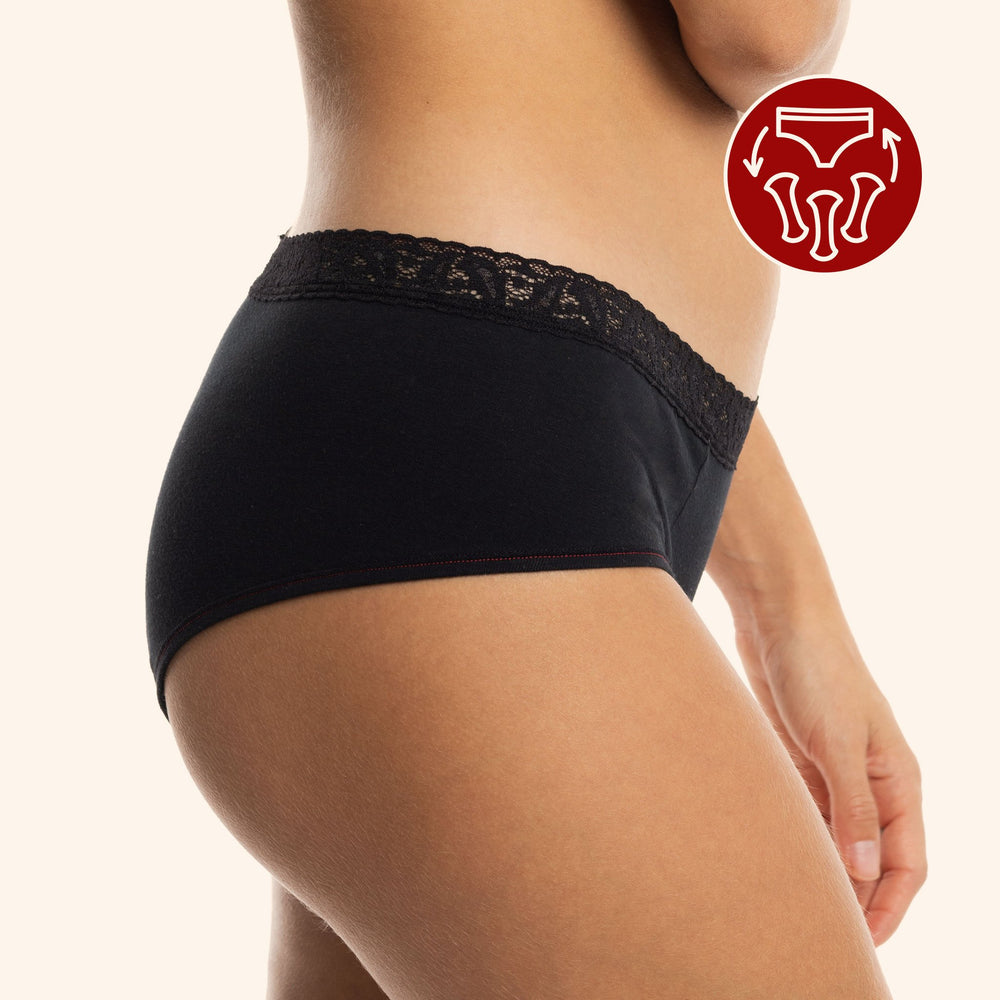
"Long live healthy and positive menstruations." An expression that slips off the lips so well on a Thursday (“the new Friday”) during a hipster cocktail hour, in the heart of Montreal’s Mile End, a gluten-free Martini at your fingertips. But what is healthy menstruation? What does that imply? Should I be concerned about the hygiene products I use? If the tampon is so dangerous, why does everyone use it? Here we’ll shed light on the very controversial tampon and its dangers. You’ll find out what it is made of and exactly how it can impact your body.
THE TAMPON AND ITS DANGERS: A GREAT MURDERER

The tale of the tampon is not spotless (unlike those reliable little Mme L'Ovary panties! In the past, for many active women, the tampon was considered a Saviour, the key to freedom itself! Tampons were much more discreet and smaller than their colleagues, the sanitary pads.
Unfortunately, the tampon tumbled from the throne of Holiness, passing from the Messiah of Menstruation to the devil in synthetic cotton because of the health problems it created.
The troubles began with the marketing of Rely, a huge super-tampon so absorbent that women kept it throughout their period, which caused a danger to health and a major challenge to remove it afterwards ...!
As a result, at the end of the 1970s, a torrent of cases of toxic shock syndrome swept the world. In one year, 600 women suffered from the syndrome and 100 women died.
The correlation between the use of tampons and women's health problems is becoming increasingly clear. Doubts and concerns about the impacts of the tampon on health are beginning to enter the minds of consumers.
During this dark time for the big manufacturers, all face bloody lawsuits.
So how do we explain that a small object, which is said to be “white as snow,” could be so detrimental to public health?
THE VAGINA: AN INVITING ENTRANCE DOOR

First of all, it must be noted that the vaginal mucosa is 10 times more permeable to contraceptives, drugs and other products than the oral route! The hygienic products that we insert have a direct impact on our health. This is why it is essential to know what tampons are made of!
LET'S DISSECT THE TAMPON
As you might have guessed, the tampon’s composition is questionable.
In 2016, the Director of the ANALYTIK laboratory, Bernard Tailliez, analyzed the tampons made by six popular brands. A long grocery list of 20 to 30 chemical has been listed, including two substances which, by the way, are among the 10 most dangerous chemicals in the world!
Here is a description of some of the chemicals found!
What is dioxin?
What is it used for?
To make the tampon more absorbent, manufacturers now use, instead of cotton, chemical cellulose, a product from trees.
- The only catch: its brown color!
- The only solution: bleach with chlorine dioxide* or even elemental chlorine.
- The consequence: chlorine dioxide produces dioxin, a carcinogen, widely present in the industry.
*Chlorine dioxide is so dangerous that it’s impossible to transport it by truck or pipeline; it must be produced on site!
Effects on the body:
- Injures the immune system
- Interferes with the hormonal system
- Causes cancer
- Causes endometriosis*
*What is endometriosis? Normally, tissue called the Endometrium detaches from the uterus and is evacuated during menstruation. In the case of endometriosis, the endometrium spreads to other organs such as the intestines, fallopian tubes and ovaries. This very painful pathology increases the risk of miscarriages and can cause infertility. Between 150 and 250 million women in the world are affected by this condition.
What are phthalates?
What is they used for?
Phthalates are used to soften plastic.
Effects on the body:
The problem is that they come into contact with the mucous membranes of the vagina during a period of great vulnerability in the cycle: menstruation that occurs just before the ovum is conceived. However, it has been proven that the higher the number of phthalates during ovulation, the greater the risk of miscarriage.
Phthalates arecarcinogenic endocrine disruptors. They block the messages that hormones emit to the different parts of the body and thereby affect the fertility of women whose reproductive system doesn’t work without them.
Unfortunately, the link between the absorption of phthalates and infertility is increasingly evident.
Finally, to further disrupt their users, several tampons have tested positive for many health-damaging pesticides.
CHEMICAL COMPOUNDS ARE FOUND IN SUCH SMALL QUANTITIES THAT THEY DON’T REPRESENT A HEALTH RISK. MYTH OR REALITY?
Many argue that the rate of health-damaging chemicals is so small that they have no health impact. Which is not true, according to Dr. Philip Tierno, Professor of Microbiology and Pathologies.
Month after month, for 40 years, a woman will use 11,000 to 16,000 tampons. The toxic products they contain are absorbed by the vagina’s mucous membranes and accumulate in fats, consistently throughout life.
Therefore, even if the quantity present is minimal, it is necessary to take into account the accumulation of chemicals and their long-term effects on the body!
AND, THE FAMOUS TOXIC SHOCK SYNDROME— WHAT'S THAT?
The function of the vagina is to be a channel that lets the menstrual flow pass through, whereas imprisoning the menstrual flow inside a tampon for several hours creates an environment conducive to bacterial growth.
TSS is caused by the bacterium Staphylococcal gold, or more specifically, by the toxins that it releases. The bacterium uses the stagnant menstrual flowand synthetic tampon products as a breeding medium.
The toxins produced by this bacterium pass through the blood, destroy red blood cells, activate the immune cells, cause a generalized infection and affect the entire immune system.
Here are some symptoms oftoxic shock syndrome:

A LACK OF TRANSPARENCY THAT WORRIES
The lack of transparency began in 1979, when the U.S. Food and Drug Administration(FDA) changed the tampon’s classification from “Cosmetic”(where manufacturers were required to display the list of ingredients on the packaging) to “Medical Device”(where they were not).
Basically, you get the full list of ingredients in your lipstick but not your tampon, an intravaginal device packed with chemicals. What’s wrong with this picture?

The manufacturers seem to have decided on their own terms, because no law governs them.
According to the Director of the ANALYTIK laboratory, Bernard Tailliez, it’s normal to question the safety of all the chemical substances in tampons. If companies prefer not to indicate them on the packaging, there are reasons ...
To date, manufacturers still refuse to provide interviews or publish the composition of their menstrual articles.
This lack of transparency is troubling.
Moreover, not disclosing this information prevents researchers from getting the data necessary to find out what triggers health problems in women using tampons.
CRUMBLING CONFIDENCE, YEAR AFTER YEAR
Over the years, consumer confidence in manufacturers has often been shaken. Following numerous lawsuits, it was proven that manufacturers were aware of the link between their tampons and toxic shock syndrome, but they chose to ignore it.
A fine example of this bad faith: for years, tampon manufacturers have been denying the use of the very toxic elemental chlorine in their products. For example, an analysis of the Fenholloway River, the most polluted in Florida, adjacent to the Foley cellulose mill, exceeds the regulatory standards for traces of dioxin by more than 200 times.
Documents from former employees also stipulate that, in 2015, they used and possessed up to 580 tons of elemental chlorine on their site. The same manufacturer who denied their use.
IN THE END, HYGIENIC PROTECTION THAT DOESN’T PROTECT WOMEN
Many companies’ sole objective is to increase their profits, at the expense of women's health.
To do this, they aim to improve the tampons’ absorption capacity as well as their appearance with questionable and cheap chemicals.
This is why it is important, more than ever, to offer ethical products designed by companies with high quality standards and who prioritize the well-being of their consumers first and foremost!
Sources
https://www.theatlantic.com/health/archive/2015/06/history-of-the-tampon/394334/
http://naturallysavvy.com/care/why-are-tampons-classified-as-medical-devices
https://www.youtube.com/watch?v=BBWXQi2wScs&t=3422s
https://www.lemonde.fr/sante/article/2017/04/26/les-tampons-hygieniques-sont-ils-dangereux-pour-la-sante_5118180_1651302.html























